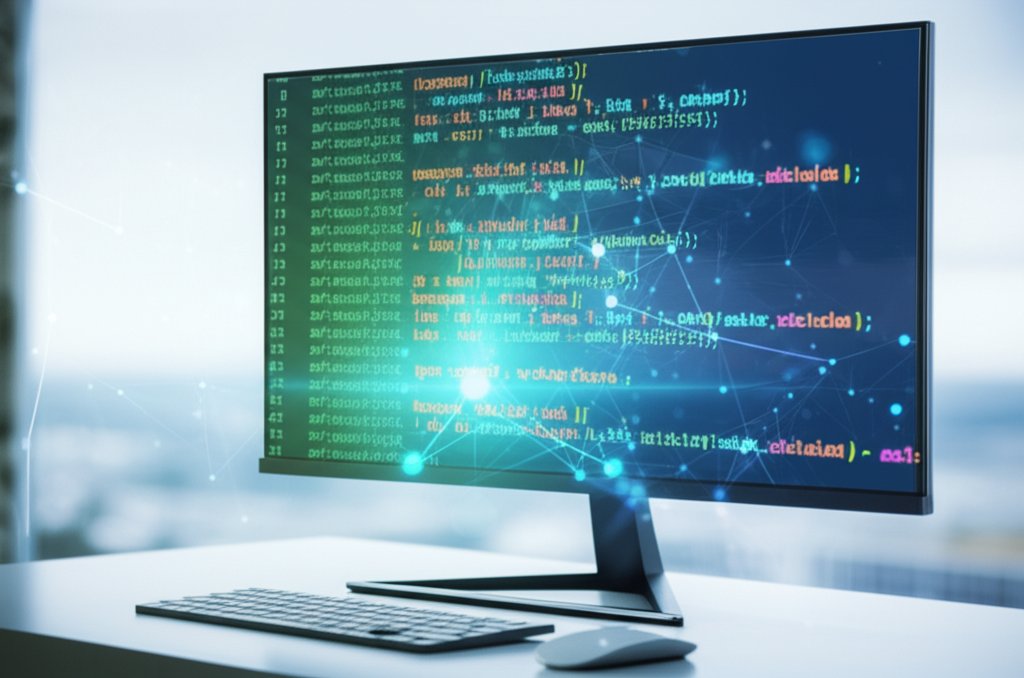AI’s Secret Weapon: How It Spots Zero-Day Cyber Threats Before They Hit Your Apps
Imagine a hidden digital flaw in an app you rely on daily – a secret backdoor no one knows about yet, not even the creators. This, my friends, is a zero-day vulnerability, and it’s one of cybersecurity’s most unsettling threats. These are unknown software weaknesses that hackers can exploit without any warning, leaving your applications and data critically exposed.
But what if there was an early warning system, a cutting-edge defense that could find these invisible flaws before they’re weaponized against you? That’s precisely where AI-powered static analysis comes in. It’s truly a game-changer, empowering us to take control of our digital security, protecting our digital lives and our businesses from the most insidious attacks.
In this post, we’re going to break down what zero-days are, understand what traditional static analysis does, and then explore how artificial intelligence supercharges this process. We’ll discover how AI offers advanced security for everyone – from individual users to small businesses – enhancing application security against the most elusive threats.
The Invisible Danger: What Are Zero-Day Vulnerabilities?
A “Secret Door” in Your Software
Let’s simplify it. A zero-day vulnerability is a software flaw that attackers discover and exploit before developers even know it exists. The term “zero days” refers to the amount of time developers have had to create a patch or fix it – zero days. It’s like a burglar finding a secret, unlisted passage into your home that even the architect didn’t know existed. That’s a pretty frightening thought, isn’t it? It leaves you completely defenseless, caught by surprise.
Why Zero-Days Are So Dangerous
- No Warning, No Patch: Since no one knows about the flaw, there’s no immediate fix available. Traditional defenses, like antivirus software that relies on known “signatures” of malware, are often powerless against them. We’re talking about threats that bypass your conventional defenses entirely, slipping past your digital guard without a trace.
- High Impact: The consequences can be devastating. Zero-day exploits can lead to massive data breaches, significant financial loss, identity theft, privacy invasion, and even crippling business disruption. We’ve seen them target governments and large enterprises, and unfortunately, they often trickle down to impact countless home users and small businesses too.
Static Analysis: The “Blueprint Inspector” for Your Applications
What is Static Analysis (No Running Required!)
Think of static analysis like an experienced building inspector examining the blueprints and materials of a house before it’s even built. They’re looking for structural weaknesses, code violations, or faulty designs on paper, not by testing if the roof leaks during a storm. In the world of software, it means analyzing the application’s code and related files without actually running the program. It’s like reading a recipe very carefully to find mistakes before you even start cooking, identifying potential issues before they cause real problems.
What are these tools looking for? Common coding errors, potential security misconfigurations, and known insecure patterns that could leave an application vulnerable to attack.
The Limits of Traditional Static Analysis
While incredibly useful, traditional static analysis has its limitations. It primarily relies on predefined rules and known vulnerability patterns. It’s excellent at catching mistakes we’ve seen before or that fit an established checklist. But what about something entirely new? It struggles with entirely novel, unseen vulnerabilities – those pesky zero-days – because it simply doesn’t have a rule for them yet. It’s like our building inspector having a checklist for common issues but being stumped by an entirely new, never-before-seen design flaw. This is where the truly dangerous threats can slip through.
Enter AI: Supercharging Static Analysis to Find the Unknown
Beyond Rules: AI’s Learning Power
This is where AI changes the game. Instead of just following static, pre-programmed rules, artificial intelligence leverages machine learning algorithms to learn what secure, well-behaved code looks like. It’s not just checking boxes; it’s understanding the underlying principles and intricate relationships within the code. AI can process and comprehend vast amounts of code far beyond human capacity, learning from countless examples of both secure and vulnerable code. It’s like giving our building inspector not just a checklist, but also the ability to learn from every building ever constructed, understanding architectural principles at a fundamental, intuitive level.
How AI Spots the Unseen (Even Zero-Days!)
This deep learning capability is how AI can effectively uncover the previously unseeable, even zero-days. Here’s how it does it, using specific AI mechanisms:
- Anomaly Detection (Machine Learning): AI systems are trained on massive datasets of clean, secure code. They build a sophisticated model of what “normal” and “safe” looks like. When analyzing new code, they use this learned model to identify subtle, unusual patterns, deviations, or behaviors that don’t match known good patterns or known bad patterns. These anomalies – slight statistical irregularities or logical divergences – are flagged as potential zero-day vulnerabilities. It’s not just looking for a specific flaw; it’s looking for anything that just doesn’t fit the expected secure paradigm.
- Understanding Code Intent (Semantic Analysis & Deep Learning): Traditional analysis often just sees syntax. AI, however, can leverage deep learning neural networks to analyze the logic, purpose, and semantic meaning of code, understanding how different functions and components are intended to interact. It can find flaws not just in individual lines, but in how an application’s various parts communicate, which often leads to complex zero-day exploits, like a vulnerability in business logic that allows for an OTP bypass or unauthorized data access.
- Contextual Awareness (Graph Analysis & Relational Learning): Modern applications are complex, relying on many components, including third-party libraries. AI can build intricate “graphs” of code relationships, tracing data flow and analyzing complex interactions within an application and across its many dependencies. This allows it to uncover vulnerabilities that might arise from these complex connections, even if individual components seem fine in isolation.
- Predictive Capabilities (Predictive Modeling): By analyzing trends, historical vulnerability data, and the evolution of coding practices, AI can use predictive models to even forecast where new types of vulnerabilities might emerge. This allows for truly proactive defense strategies, anticipating potential weaknesses before they are even theoretically possible for attackers to discover. It’s like foreseeing where a new structural weakness might appear in architecture based on evolving building methods and material science.
A Hypothetical Example: Predicting a Logic Bypass
Consider a new e-commerce application feature where users can adjust shipping addresses after an order is placed, but only within a certain time window and before shipment. A zero-day exploit might involve a highly specific, never-before-seen sequence of API calls that manipulates backend timing checks, allowing an attacker to change the shipping address after the order has shipped – diverting packages and causing financial loss. Traditional static analysis, relying on known patterns like SQL injection or cross-site scripting, would likely miss this novel business logic flaw. An AI, however, having deeply learned the secure logic of countless e-commerce systems and user permission flows, could flag the specific combination of API parameters and timing interactions as an extreme anomaly, predicting a potential logic bypass exploit vector before it’s even conceived by attackers. It sees the “gap” in the logic that no human or rule-based system had ever encountered.
Speed and Efficiency
Another huge benefit? Speed. AI-powered tools can perform continuous, rapid scans of codebases, catching issues earlier in the development process. This approach, often called “shift-left” security, means we’re addressing problems when they’re cheaper and easier to fix, significantly reducing the window of opportunity for attackers. It’s an incredible boost to efficiency, freeing up human security teams to focus on the most complex, strategic challenges, rather than tedious manual review.
Real-World Impact: How This Protects You and Your Small Business
Proactive Protection, Not Just Reaction
AI-powered static analysis truly moves cybersecurity from a reactive stance (fixing after a breach occurs) to a proactive one (preventing breaches in the first place). For us, whether we’re using a favorite app or running a business, it means a greater sense of peace knowing that our digital assets are being guarded by intelligent, ever-learning systems that can spot threats before they become problems.
More Secure Software for Everyone
This advanced technology directly translates into more secure software for all of us. The applications we use every day – our web browsers, operating systems, mobile apps, and critical business software – can be more thoroughly vetted for unknown flaws before they even reach our devices. This significantly reduces the risk of your personal data being compromised by a zero-day attack, making the entire digital world a safer, more reliable place to operate.
A Stronger Digital Shield for Small Businesses
For small businesses, this is profoundly impactful. Zero-day exploits can be catastrophic, leading to direct financial losses, reputational damage, and loss of customer trust. AI-powered static analysis helps protect valuable customer data, intellectual property, and critical business operations from these crippling attacks. It ensures business continuity and customer confidence by proactively preventing costly downtime and security incidents. Essentially, it provides enterprise-level security capabilities that were once out of reach for smaller organizations, leveling the playing field against increasingly sophisticated threats and allowing you to focus on growing your business, not just defending it.
Empowering Your Choices: What to Look For
As users and small business owners, we can indirectly benefit by choosing software and service providers who prioritize advanced security measures. When you’re evaluating new tools or platforms, it’s always smart to inquire about their development and testing processes. Look for vendors who explicitly mention employing cutting-edge techniques, including AI, to safeguard their applications against unknown vulnerabilities. This empowers you to make more informed choices about who you trust with your digital life and business data, strengthening your overall security posture.
Conclusion
Zero-day vulnerabilities will always remain a potent threat in our interconnected world, a constant reminder of the digital frontier’s inherent risks. However, AI-powered static analysis offers a powerful, intelligent defense by finding these hidden flaws before they can be exploited. It’s an exciting development in cybersecurity, providing enhanced protection for our personal data and small business assets, shifting the advantage back towards the defenders.
While no system is ever 100% foolproof, AI’s ability to “think” like a hacker, “learn” from vast amounts of code, and detect subtle anomalies is truly a game-changer in the ongoing battle for our digital security. We’re no longer just reacting to threats; we’re getting smarter, faster, and more proactive in our defense. It’s an exciting time to be involved in making the digital world a safer place for everyone, giving us the tools to take control of our security destiny.



